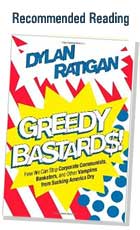 Don’t Forget About the Fed’s Other Asset-Buying Effort
Don’t Forget About the Fed’s Other Asset-Buying Effort
Atlantic.com | by: Daniel Indiviglio
In early November, the Federal Reserve Open Market Committee (FOMC) decided to begin a new program to buy $600 billion in longer-term Treasury securities. It would do so by purchasing $75 billion per month for eight months. But that isn’t the whole story. This new quantitative easing measure, commonly referred to as QE2, is really just a more aggressive extension of a program that was initiated in the FOMC’s August meeting. The November minutes, released on Tuesday, provide some detail on the earlier program that helps paint a more complete picture of the Fed’s monthly purchases.
Most of the narratives surrounding the FOMC’s November minutes talked about how the Fed economists are uncertain about the future or weren’t in full agreement about the effectiveness of QE2. But they also contained a little information on the August program’s progress, which could be dubbed QE1.5. It served to ensure that the Fed’s balance sheet would not shrink as mortgage-backed securities and other assets on its balance sheet mature. So as the Fed gets cash for those holdings, it would reinvest it in longer-term Treasury securities, also the assets of choice for QE2.
The November minutes said:,
The Open Market Desk at the Federal Reserve Bank of New York purchased a total of about $65 billion of Treasury securities since the Committee decided, on August 10, to begin reinvesting such principal payments.
A little simple math shows that 82 days that elapsed between August 11th and November 1st, which averages out to about $24 billion per month in asset purchases. So if you add QE1.5 to QE2, then the Fed will actually be buying close to $100 billion in longer-term Treasury securities per month — not just $75 billion, as QE2 alone implies. Of course, that assumes that the assets on its balance sheet continue to mature at a consistent pace.
Read the rest of this article in the Atlantic.com>>
Daniel Indiviglio – Daniel Indiviglio is a staff editor at TheAtlantic.com, where he writes about credit markets, regulation, monetary & fiscal policy, taxes, banking, trade, emerging markets and technology. Prior to joining The Atlantic, he wrote for Forbes. He also worked as an investment banker and a consultant.




